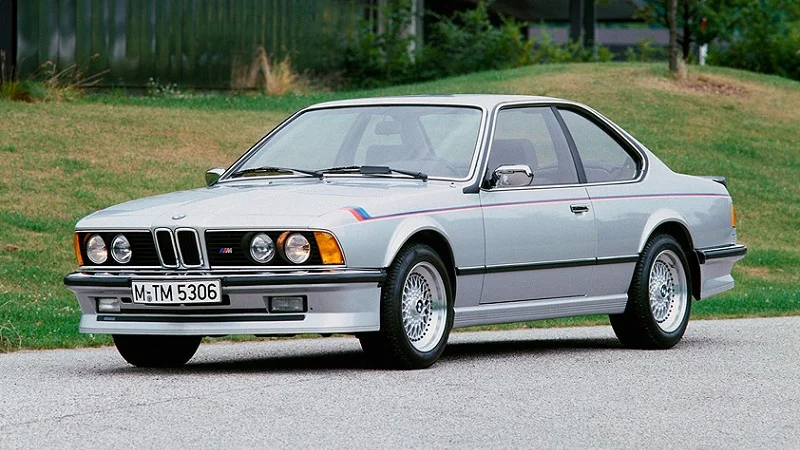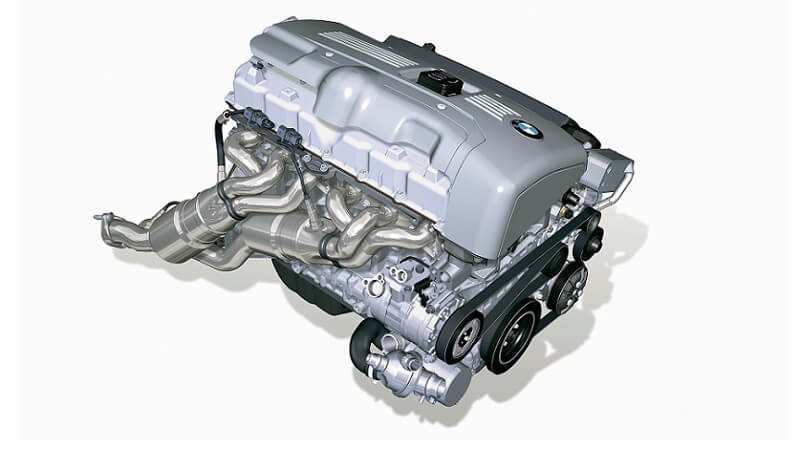Today’s BMW 6-Series Gran Turismo has come a long way since the German manufacturer first introduced it. The 6-Series made its debut in 1976 with the BMW E24. This range of cars was around during the same period as the E30 3-Series and the E28 5-Series, both prevalent models that are iconic classics today. Understandably, the original 6-Series is overshadowed by these two models. However, back in the day, it was BMW’s attempt at making a luxurious, executive car that was also brilliant to drive; and the manufacturer certainly managed to do so.
Soon after it was launched, the BMW E24 became the go-to machine for white-collar professionals. A brand-defining model, it was the perfect example of what a premium GT car should be.

BMW E24: Over the Years
The E24 6-Series succeeded the E9 range of coupes. It was designed by Paul Bracq, the man also responsible for creating the first BMW 3-Series (E21) and the original BMW 7-Series (E23).
During its 13-year production run, from January 1976 to April 1989, BMW built 86,216 E24 cars. This is one of the longest runs for a BMW. Interestingly, a significant contributing factor to such a long production run was the fact that the E24 was based on two different platforms. Until 1982, the cars were based on the E12 5-series, after which BMW used the E28 5-Series as the base.
It’s hard to spot the differences if you don’t know what to look for. But, there were minor changes made across the exterior and to the dashboard.
BMW also updated the cars with slightly different powertrains — nearly all of them featured some iteration of the M30 engine. Here’s a look at the BMW E24 6-Series over the years:
BMW E24 630 CS and 633 CSI
The E24 range debuted with the 630 CS and the 633 CSi; the “CS” in the names stood for “Coupe Sport.”
The entry-level 630CS was produced up to 1979 and featured a 3.0 liter, inline-six engine which made 185 hp and 188 lb-ft of torque. The version of this car that made it to the North American market was called the 630CSi. It launched in 1977 and, while it featured the same engine, produced marginally less power and torque.
The 633 CSi, meanwhile, introduced alongside the 630 CS, was powered by a different iteration of the M30 engine. From 1976 to 1979, peak output figures were 200 hp and 210 lb-ft of torque; in 1979, BMW detuned the engine to produce slightly lower figures. This car was on sale until 1984.
BMW E24 628 CSi
In 1979, 628 CSi replaced the carburetted 630 CS. Powering this car was a 2.8-liter, fuel-injected engine that produced 184 hp and 173 lb-ft of torque.
BMW E24 635 CSi
Between 1978 and 1982, BMW manufactured the E24 635 CSi. It was initially launched with the M90 engine, but in 1982 BMW swapped that out for the M30. This engine, too, saw multiple iterations on the 635 CSi. The 635 CSi was the longest-running model in the E24 line-up.
The First M6: E24 M635 CSi
In 1984, BMW unveiled the M635 CSi, widely considered the first M6. It was powered by the capable M88 engine — the powerhouse from the BMW M1. This 3.5-liter engine produced 286 hp at 6,500 rpm and 251 lb-ft of torque at 4,500 rpm.

BMW also made revisions to the chassis with reinforced stabilizers and stiffer springs for the suspension. It also added a limited-slip differential. Changes to the exterior included new front and rear spoilers and cross-spoke wheels courtesy of BBS.
The E24 M635CSi, christened M6 for the Japanese and American markets, arrived in the US in 1987. Owing to stricter emissions regulations, BMW had to use a different engine for the M6; it featured the S38 motor instead of the M88. Ultimately, the M6 produced about 30 hp less than its European counterpart.
BMW E24 In Motorsports
Despite being a luxury GT car, the E24 6-Series proved to be quite successful on the racetrack. Iterations of the 635CSi celebrated victories in the 1983, 1985, and 1986 24 Hours of Spa-Francorchamps as part of the European Touring Car Championship. It also won the overall championship in 1981, 1983, and 1986.
In 1984 and 1985, the E24 also won the Nürburgring 24 Hours and other titles. It also won the inaugural German Production Car Championship – the predecessor to the DTM touring car series – in 1984. The cars also enjoyed success in the Japanese and Australian touring car championships.
Common Problems With The E24 6-Series
Today, the youngest example of a BMW E24 6-Series is 32 years old. It’s almost impossible to find one that isn’t facing some kind of issue. However, if you’re in the market for one, there are some things you can keep an eye out for to reduce the risk of buying a car that will require a lot of restoration.

Rust
Given the age, the most likely problem you will encounter is rust. The wheel wells, door and sunroof trims are most commonly affected by rust. These areas should give you a fair understanding of the car’s overall condition.
Engine
The straight-six engine on the E24 ran the risk of overheating — this could result in its aluminum head warping or cracking. To prevent this from happening, the engine cooling system has to be working perfectly; this includes the radiator, water pump, thermostat, and more. Make sure to inspect the head and ask the previous owner whether the cooling system has been maintained to spec.
You should also check the valvetrain, if possible, and ensure that they were adjusted at regular intervals. Luckily, the E24 is based on the 5-series and since they share a lot of mechanical parts, replacing certain bits is quite affordable.
BMW E24 6-series – The Original Ultimate Driving Machine
The E24 wasn’t as exciting as the E30 3-Series or the E23 7-Series sold alongside it, but it was still a great car to drive. While also being more adorable to own and maintain.
There are several reasons why the BMW E24 6-Series was a successful model; it was purposeful in its design and was immediately recognizable thanks to its inward-slanting nose, with people referring to the car as the “shark.” However, what truly set it apart was that it was the original 6-Series GT from BMW and set the benchmark for what a great GT car should be.





